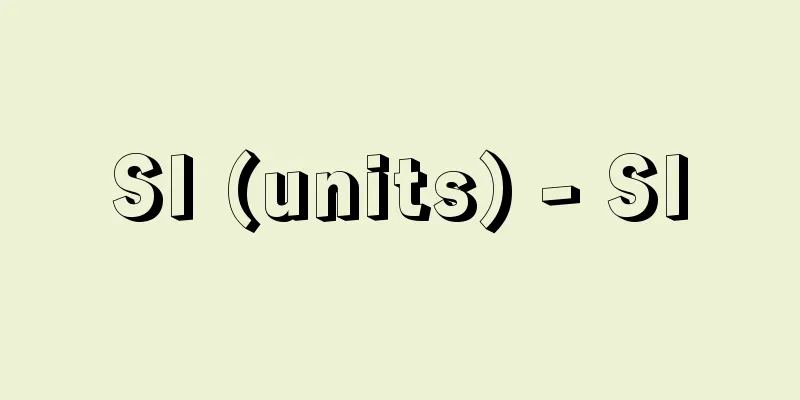SI (units) - SI

|
The SI is a system of units that was adopted in 1960 as a single practical system of units that could be adopted by all contracting parties to the Metre Convention. Its international abbreviation is SI, which stands for système international d'unités in French. From [Unit]…Most of these are in line with the principles of the metric system, so they cannot be rejected, but on the other hand, the diversification of the unit system must be avoided. After discussions that began in the 1930s, this contradiction was resolved for the time being at the General Conference on Weights and Measures in 1960, and the International System of Units (SI) was established. The SI defines base units (meter, kilogram, second, ampere, kelvin, mole, candela) corresponding to seven selected basic quantities (base quantities) (length, mass, time, electric current, thermodynamic temperature, amount of substance, luminous intensity), and also defines supplementary units (radian, steradian) corresponding to two supplementary quantities (plane angle, solid angle). For other quantities, it considers ``derived quantities'' through the intermediation of equations that represent the definitions and laws of physics, and defines ``derived units'' simply and clearly without using complicated coefficients. … *Some of the terminology that refers to "SI (units)" is listed below. Source | Heibonsha World Encyclopedia 2nd Edition | Information |
|
…メートル条約の全締約国が採用することのできる単一の実用的な計量単位系として1960年に採用された単位系。その国際的な略称をSIといい,フランス語système international d’unitésの略である。 【単位】より…それらの大部分はメートル法の理念に沿うものであったから,拒否の対象とすることはできないが,一面,単位系の多様化は避けられなければならない。この矛盾は,1930年代からの検討の末に,60年の国際度量衡総会でひとまず解決され,国際単位系(SI)が成立した。国際単位系は,選ばれた七つの基本的な量(基本量)(長さ,質量,時間,電流,熱力学温度,物質量,光度)にそれぞれ対応させて基本単位(メートル,キログラム,秒,アンペア,ケルビン,モル,カンデラ)を定め,また,二つの補助的な量(平面角,立体角)に対応させて補助単位(ラジアン,ステラジアン)を定め,他の量については,物理学上の定義や法則を表す関係式の仲介のもとに〈組立量〉を考え,煩雑な係数などは用いないで簡明に〈組立単位〉を定めている。… ※「SI(単位)」について言及している用語解説の一部を掲載しています。 出典|株式会社平凡社世界大百科事典 第2版について | 情報 |
>>: Es - Es (English spelling) German
Recommend
Inoue Nissho
Leader of a right-wing terrorist group. His real ...
Apoji [Mountain Range] - Apoji
…There are several mountain ranges on the Brazili...
Alabastron - Alabastron
Please see the Alabaster page. Source: Encyclopae...
Aritooshi Myojin Shrine
...General term for insects belonging to the Form...
Temporary Cohort - Kasetsu Cohort
...When calculating how many children a group of ...
Reason for discussion - Giko
〘 noun 〙 One of the six principles in the Ritsuryo...
AEN - A-I-N
...Specifically, a standard transmission system i...
Siderite (siderite)
A type of iron ore. Its chemical composition is Fe...
Kanasashi Pass - Kanasashi Pass
...This was the largest checkpoint in the Edo per...
Vicarious menstruation
It is periodic bleeding from outside the genitals ...
Solvent - yozai (English spelling) solvent
In English and German, there is no distinction, b...
teleomorph
...As described above, fungi have both sexual and...
Educational technology
It has been used in Japan since the early 1960s, ...
Yokan - Yokan
〘Noun〙 ("Kan" is the Chinese pronunciati...
Lake Biwa
A fault-caused lake in the center of Shiga Prefec...









